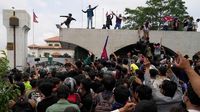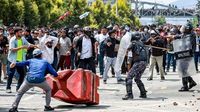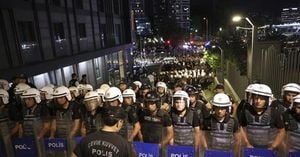The streets of Kathmandu erupted in chaos on September 8, 2025, as tens of thousands of demonstrators—most of them young Nepalis—took to the heart of Nepal’s capital to protest a sweeping government crackdown on social media. What began as a rally against digital censorship quickly escalated into one of the deadliest days in Nepal’s recent history, with police opening fire and at least 17 people confirmed dead, according to police official Shekhar Khanal, and over 145 wounded. Some reports placed the death toll even higher, at 19, as violence spread beyond the capital to other cities like Itahari.
At the center of the unrest was a new government policy requiring major social media platforms—including Facebook, X (formerly Twitter), and YouTube—to register officially in Nepal and submit to government oversight. When about two dozen platforms failed to comply, authorities blocked access to them, sparking outrage among the country’s digitally savvy youth. Only a handful of networks, such as TikTok and Viber, had registered and continued to operate without interruption.
The government’s move was framed as a bid to ensure social media platforms are “properly managed, responsible and accountable,” a phrase repeated in the proposed bill sent to parliament for debate. The legislation would require companies to appoint a liaison office or a point of contact in Nepal. But critics, including rights groups and many protesters, saw the bill as a thinly veiled attempt to curb freedom of expression and punish government opponents who voice dissent online. The bill’s timing—coming just a year after Nepal lifted a controversial ban on TikTok, once accused of disrupting “social harmony”—only heightened suspicions.
Rallies quickly swelled around the Parliament building, which was cordoned off with barbed wire and guarded by riot police. According to The Associated Press, protesters—many in school and college uniforms—pushed through the barricades, forcing police to retreat inside the complex. Chants of “Stop the ban on social media. Stop corruption, not social media,” echoed through the streets, red and blue national flags waving above the crowd. The demonstration was soon dubbed the “protest of Gen Z,” a nod to the generation born between 1995 and 2010, who have grown up in a Nepal transformed by digital connectivity—and, as many say, persistent political frustration.
Police initially responded with tear gas, water cannons, and rubber bullets. But as the crowd surged and some forced their way into restricted areas, officers opened fire with live ammunition. “Tear gas and water cannons were used after the protesters breached into the restricted area,” police spokesperson Shekhar Khanal told the AFP news agency. Dr. Badri Rijal, chief medical superintendent at the National Trauma Centre in Kathmandu, described the aftermath: “Many of them are in serious condition and appear to have been shot in the head and chest.” Seven of the dead and scores of wounded were treated at the Trauma Center alone, while other hospitals across the city reported casualties as well.
The violence wasn’t confined to Kathmandu. In the eastern city of Itahari, two people were killed as protests there turned deadly, local police said. Altogether, more than 100 people—including at least 28 police officers—were hospitalized with injuries. Families waited anxiously outside emergency rooms for news, while lines formed at blood donation centers in a show of solidarity and desperation.
For many, the protests were about more than just access to social media. “We want to see change. Others have endured this, but it has to end with our generation,” said Ikshama Tumrok, a 20-year-old student, to the AFP. Signs carried through the streets read “Shut down corruption and not social media,” and “Youths against corruption.” Anurag Acharya, director at Policy Entrepreneurs Inc, a Kathmandu-based think tank, told Al Jazeera, “This is the generation that grew up with the optimism and dream of an inclusive new Nepal, a dream that remains elusive a decade after the new constitution was promulgated.” He added, “The reality for today’s Gen Z is that there are few livelihood prospects at home, which forces thousands to migrate abroad for studies and jobs. So, the frustration with unstable governments and rampant corruption had reached a tipping point.”
Authorities defended their actions, arguing that the crackdown on social media was necessary to combat the misuse of platforms, including the spread of hate speech, fake news, and fraud. “The decision was taken because platforms had failed to register with authorities in a crackdown on misuse, including fake social media accounts used to spread hate speech and fake news and commit fraud,” officials told local media. On Sunday, the government released a statement asserting its commitment to freedom of thought and expression, claiming it was “creating an environment for their protection and unfettered use.”
But the government’s assurances rang hollow for many. Muktiram Rijal, a spokesperson for the Kathmandu District Administration Office, told Reuters that police had orders to use water cannon, batons, and rubber bullets to control the crowd, and that the army had been deployed as well. The government declared a curfew around parliament, the government secretariat, the presidential house, and key parts of the city, extending it to the Singha Durbar area, which includes the prime minister’s office and other government buildings. The curfew was set to remain in place until 10 p.m.
Prime Minister KP Sharma Oli convened an emergency cabinet meeting in the wake of the bloodshed. Internationally, the United Nations called for swift accountability and a transparent investigation. “We are shocked by the killings and injury of protesters in Nepal today and urge a prompt and transparent investigation,” said UN rights office spokeswoman Ravina Shamdasani in a statement.
As dusk fell over Kathmandu, the city remained tense. Smaller protests continued late into the evening, and the sense of anger and betrayal among Nepal’s youth showed little sign of abating. Many saw the day’s events as a watershed moment—a tragic but powerful assertion of a generation’s demand to be heard, both online and off.
The government’s next moves will be closely watched, not only by its own citizens but by the world. For Nepal’s Gen Z, the fight for digital freedom and accountability is far from over—and the consequences of September 8 will echo for years to come.






